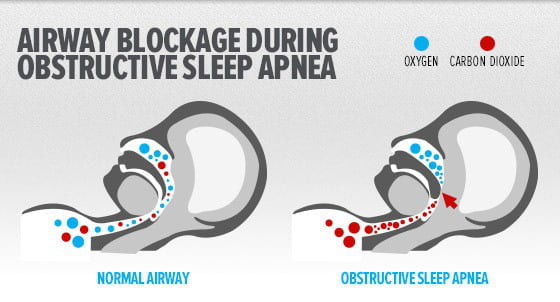CPAP is an important treatment for obstructive sleep apnea, but it’s not without its frustrations. Learn how to avoid uncomfortable masks and other common CPAP problems.
Continuous positive airway pressure (CPAP) therapy is a common treatment for obstructive sleep apnea. It includes a small machine that supplies a constant and steady air pressure, a hose, and a mask or nose piece.Common problems with CPAP include a leaky mask, trouble falling asleep, and a dry mouth or nose.The good news is that if one CPAP mask or device doesn’t work for you, you have other options. And most CPAP masks are adjustable, to help make them more comfortable for you.Here are 10 common CPAP problems and what you can do about them:
- The wrong size or style CPAP mask
Work closely with your doctor and CPAP supplier to make sure you have a CPAP mask that suits your needs and fits you. Everyone has different needs and face shapes, so the right style and size mask for someone else may not work for you.
Many mask styles are available. A range of CPAP masks are available. For example, some feature full face masks that cover your mouth and nose, with straps that stretch across your forehead and cheeks. These may make some people feel claustrophobic, but they work well at providing a stable fit if you move around a lot in your sleep.Other masks feature nasal pillows that fit under your nose and straps that cover less of your face. These can feel less cumbersome.Nasal pillows may work well if you wear glasses or read with the mask on, because some nasal pillow systems obstruct vision less than do full face masks. However, they may not work if you move around a lot in your sleep or sleep on your side.
Pay attention to size. Most masks come in different sizes. Just because you’re a certain size in one mask doesn’t mean you’ll be the same size in another. CPAP masks are usually adjustable.Ask your doctor or CPAP supplier to show you how to adjust your mask to get the best fit. Manufacturer product instructions also can help show you how to do this.
- Trouble getting used to wearing the CPAP device
To start, it may help to practice wearing just the CPAP mask for short periods of time while you’re awake, for example, while watching TV. Then try wearing the mask and hose with the air pressure on, still during the daytime, while you’re awake.Once you become accustomed to how that feels, shift to using the CPAP device every time you sleep — at night and during naps. Inconsistently wearing the CPAP device may delay getting used to it. Stick with it for several weeks or more to see if the mask and pressure settings you have will work for you.
- Difficulty tolerating forced air
You may be able to overcome this by using a “ramp” feature on the machine. This feature allows you to start with low air pressure, followed by an automatic, gradual increase in the pressure to your prescribed setting as you fall asleep. The rate of this ramp feature can be adjusted by your doctor.If this doesn’t help, talk with your doctor about changing to a different type of device that automatically adjusts the pressure while you’re sleeping. For example, units that supply bi-level positive airway pressure (B-PAP) or devices that have variable pressure contours are available. These provide more pressure when you inhale and less when you exhale.
- Dry, stuffy nose
A CPAP device that features a heated humidifier, which attaches to the air pressure machine, can help. The level of humidification is adjustable. Using a nasal saline spray at bedtime also can help.Your doctor may prescribe a nasal steroid spray if your dryness doesn’t respond to heated humidity. It’s also important that your mask fit well. A leaky mask can dry out your nose.
- Feeling claustrophobic
While you’re awake, practice by first just holding the mask up to your face without any of the other parts. Once you’re comfortable with that, try wearing the mask with the straps.Next, try holding the mask and hose on your face, without using the straps. Have the hose attached to the CPAP machine at a low-pressure setting (with ramp feature turned on). And, finally, wear the mask with the straps and with the air pressure machine turned on while awake. After you’re comfortable with that, try sleeping with it on.Relaxation exercises, such as progressive muscle relaxation, also may help reduce your anxiety. It may help to get a different size mask or try a different style, such as one that uses nasal pillows.If you’re still feeling claustrophobic, talk to your doctor or CPAP supplier.
- Leaky mask, skin irritation or pressure sores
A leaky or an ill-fitting mask means you’re not getting the full air pressure you need, and you may be irritating your skin. It can also release air into your eyes, causing them to become dry or teary.Try adjusting pads and straps to get a better fit. If the device fits over your nose, make sure it doesn’t sit too high on the bridge of your nose, which can direct air into your eyes.You may need to ask your supplier to help you find a different size mask, particularly if your weight has changed markedly. Or try a different style device like a nasal pillow or a mask with an inflatable cushion that contours to your face. If you develop skin deterioration or sores, such as on your nose, tell your doctor promptly.
- Difficulty falling asleep
This is a normal, temporary problem. Wearing the mask alone for some time during the day may help you get accustomed to how it feels.Using the ramp feature, which provides an automatic, gradual increase in the air pressure to your prescribed pressure setting as you fall asleep, also may help.And practice good general sleep habits — exercise regularly, avoid caffeine and alcohol before bedtime, and try to relax. For example, take a warm bath before you go to bed. Avoid going to bed until you’re tired.
- Dry mouth
If you breathe through your mouth at night or sleep with your mouth open, some CPAP devices may worsen dry mouth. A chin strap may help keep your mouth closed and reduce the air leak if you wear a nasal mask.A full-face-mask-style device that covers your mouth and nose also may work well for you. A CPAP-heated humidifier that attaches to the air pressure machine also may help.
- Unintentionally removing the CPAP device during the night
It’s normal to sometimes wake up to find you’ve removed the mask in your sleep. If you move a lot in your sleep, you may find that a full face mask will stay on your face better.You may be pulling off the mask because your nose is congested. If so, ensuring a good mask fit and adding a CPAP-heated humidifier may help. A chin strap also may help keep the device on your face.If this is a consistent problem, consider setting an alarm for sometime in the night, to check whether the device is still on. You could progressively set the alarm for later in the night if you find you’re keeping the device on longer.
- Annoyed by the noise
Most new models of CPAP devices are almost silent. But if you find a device’s noise is bothersome, first check to make sure the device air filter is clean and unblocked. Something in its way may be contributing to noise.If this doesn’t help, have your doctor or CPAP supplier check the device to ensure it’s working properly. If the device is working correctly and the noise still bothers you, try wearing earplugs or using a white-noise sound machine to mask the noise.
Time and patience key to success
Using a CPAP device can be frustrating as you try to get used to it, but it’s important you stick with it. The treatment is essential to avoiding obstructive sleep apnea-related complications, such as heart problems and daytime fatigue.Work with your doctor and CPAP supplier to ensure the best fit and device for you, and try making adjustments if you’re experiencing some of the common CPAP problems. It may take several months to find the correct settings for you and to adapt to the mask.
With time and patience, CPAP can positively affect your quality of life and health.












